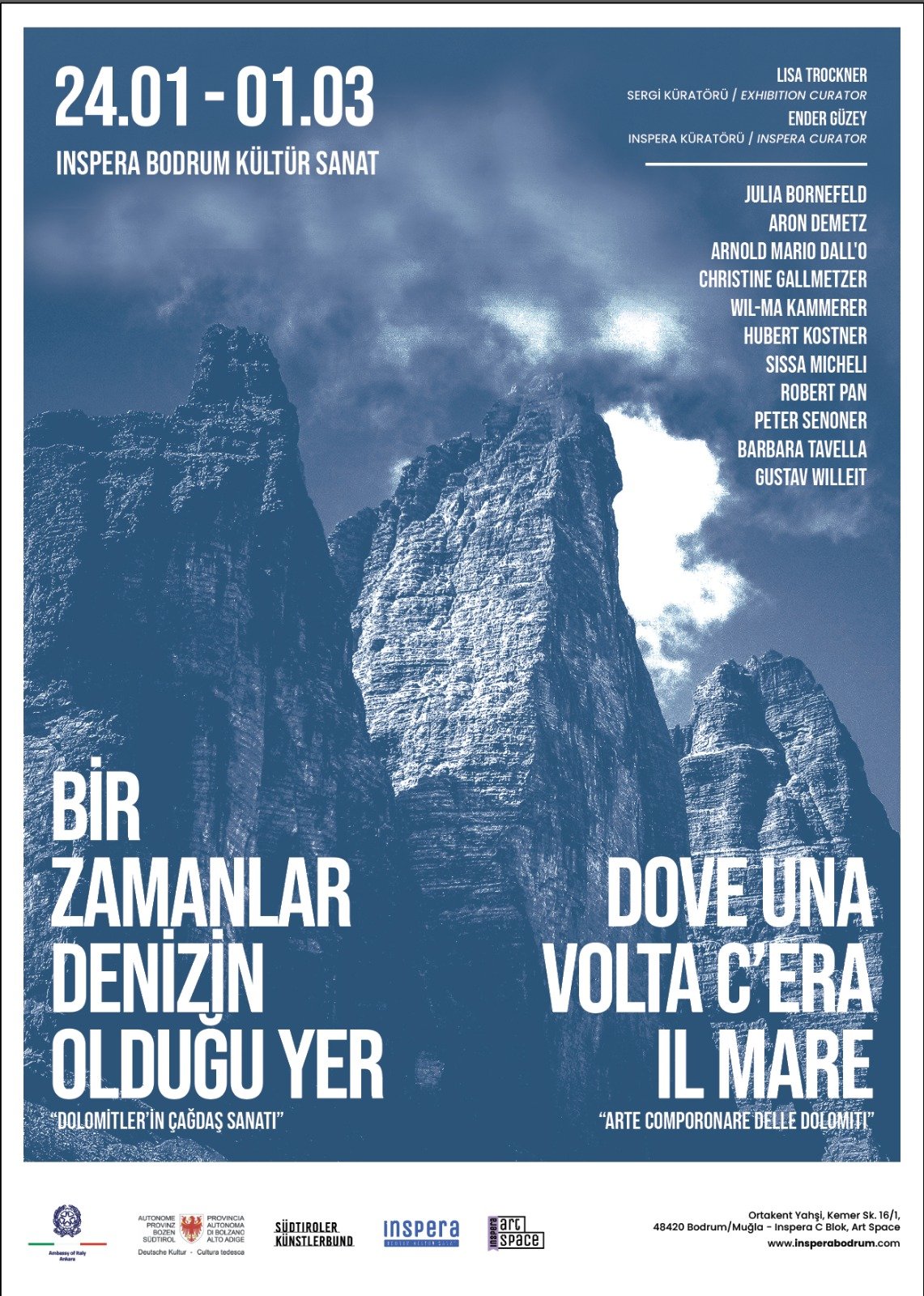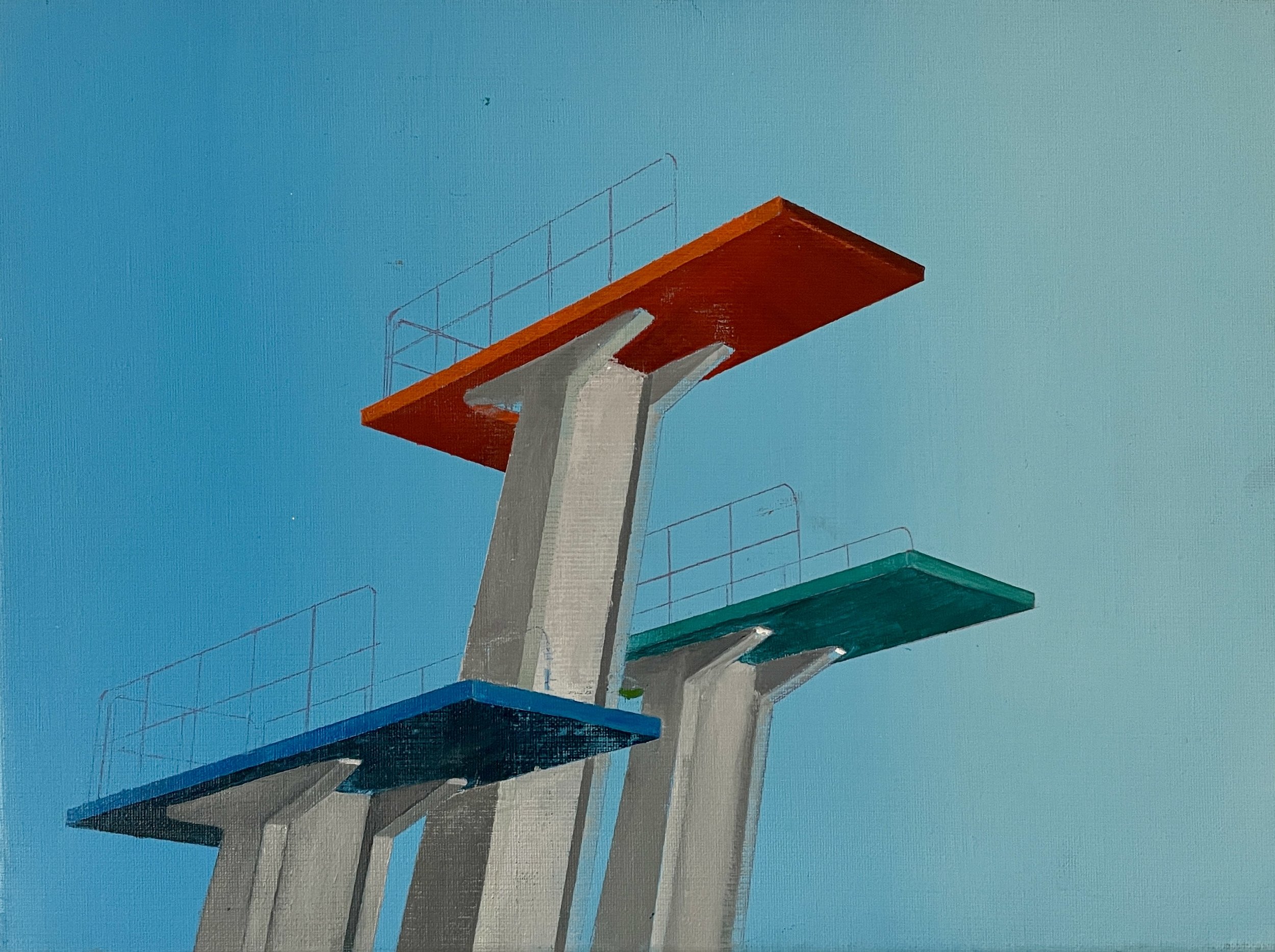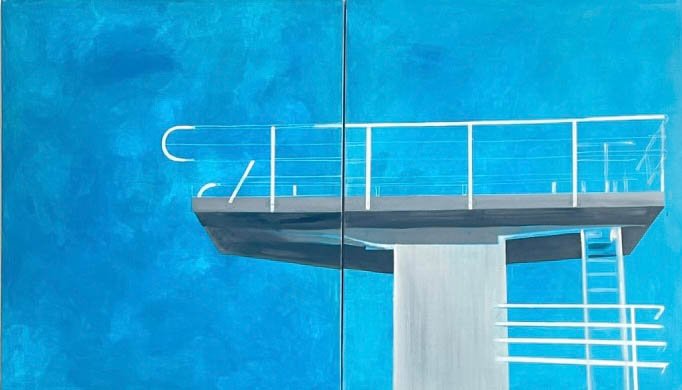News
"Frisbee" - Eine neue Kunstausstellung im Musée Würth im Elsass
Das Musée Würth präsentiert die Ausstellung Frisbee! Sport und Freizeit. Sammlung Würth vom 27. Januar bis 15. September 2024.
Die Ausstellung lädt ein, die Vielfalt der Sportarten, ihre Beliebtheit, die Freude an der Bewegung an der frischen Luft oder an Gesellschaftsspielen in Bildern und Skulpturen nachzuempfinden. Es wird deutlich, welche Anziehungskraft der Boxsport, Stierkampf, Tanz oder auch das Schachspiel auf Künstlerinnen und Künstler ausübte – von Andy Warhol über Marcel Duchamp, Man Ray, Max Ernst bis hin zu Alfred Hrdlicka oder Christine Gallmetzer. Dabei wird auch thematisiert, welche Faszination und Bedeutung von den Olympischen Spielen ausgeht.
24.01-01.03.2024 Dove una volta c’era il mare/Bir zamanlar denizin oldugu yer
INSPERA Bodrum
https://www.kuenstlerbund.org
Allegretto
Exhibition at Galerie Wittenbrink
Türkenstrasse 16
80333 München
CHRISTINE GALLMETZER - Allegretto
Ausstellungsdauer 25. März verlängert bis 23. Juni 2023
Nach erfolgreichen Präsentationen in unserem Showroom WittenbrinkFünfHöfe zeigt die Malerin Christine Gallmetzer ihre erste Einzelausstellung in der Galerie Wittenbrink.
Deren Titel „Allegretto“ bedeutet im Deutschen soviel wie „heiter und beschwingt“, womit die Künstlerin einen Kontrapunkt zu den aktuellen Krisen und Konflikten setzt. Die malerische Energie liegt also in der bewusst erarbeiteten Schwerelosigkeit ihrer Kunst, die sich jedem Rechtfertigungsdruck widersetzt und Freude gewährt.[…]
Christine Gallmetzer wurde 1964 in Bozen geboren. Sie studierte Philosophie an der Universität Verona und schrieb ihre Arbeit über die utopische Stadt „Christianopolis“ v J.V. Andrea. Die Philosophie bildet die theoretische Basis ihrer Malerei. Malerisch ausbilden ließ sie sich als Gasthörerin an der Accademia delle Belle Arti in Venedig. Heute lebt Christine Gallmetzer in Bozen und München. Ihre Arbeiten sind in renommierten Kunstsammlungen vertreten. Neben ihrer freien Malerei übernimmt sie öffentliche Porträtaufträge, wie zuletzt für das Okinawa Institut of Science and Technology (OIST) in Onna, Japan.
Galerie Wittenbrink
Türkenstr. 16, 80333 München
Tel.: 089-260 55 80
E-Mail: info@galeriewittenbrink.de
www.galeriewittenbrink.de
Allegretto
Exhibition – Galerie Wittenbrink – Munich – 25.3.-7-5.2023
Every leap is a short self-made flight. Lifted by one's own strength. Moving through the air. Jumping, flying, landing. But in these pictures, the place to land is missing, and one sees little environment other than the fine blue air. The flight is extended but only through the medium of painting, not through the jump itself, which would end somewhere.
Thus, the picture remains open, making the jump, which in reality would be quickly over, a metaphor. The jump as a metaphor. We all jump constantly. Can't or won't do anything else. Jump into risk, experience, to a new quality, to our detriment.
In these pictures, there is also beauty. There are three types of beauty: The beauty of the jumping people, the beauty of their movement in controlled flight, the beauty of the artistic rendition. Characteristics of beauty are balance, harmony, symmetry, regularity, clarity, and perfection. There are associated features such as lightness, cheerfulness, and composure. When form, content, and artistic intent come together harmoniously, an image becomes beautiful. If this succeeds, nothing needs to be excluded: stairs, whirls, honeycombs, and a cube can float together on one picture. On another, suggested walls and doors, the projection of a woman, and blossoms come together. The rule-free beautiful demands comprehensive requirements of art and perception.
The image of a hand with a ball on a smooth surface appears strange and strangely plausible at the same time. The hand, painted as an individual hand, is isolated and thus becomes the hand in itself, a part of the human being who holds something, grasps it, and, linguistically derived, understands something. Accordingly, the three-dimensional hand leads to the two-dimensional background. Even the ball it holds appears to swing between three- and two-dimensionality in some passages. Thus, between reality and abstraction. Between the diversity of appearances and the conceptually formed concept.
The yellow-saturated background recalls applied gold, which, not smooth, is therefore streaky, crumpled, glittering, old, and spotted, consciously used and preserved for a long time. In this sense, it is precious.
The motif itself confirms the valuation. It is about preciousness conveyed through extreme simplicity. The ball, in turn, a basic shape of the sphere, because of its symmetrical appearance on all sides, carries a pattern familiar from the circus or the zoo. Seals juggle with such balls there. Thus, the perfect body is also a toy. It bears a widely visible and identifiable pattern. It is clearly segmented and, in its two-tone color scheme, presents pure colors and clear contrast. Contrasts also exist with the hand and the background. Although painted together and united in the image, the individual parts form a contrast to each other. The ball has a geometric pattern and is therefore visually distant from the naturally structured and correspondingly painted hand. Another distance exists to the background, which denies all spatiality in a straight and monochrome manner. Nonetheless, there is a strange shading around the hand. The hand, it seems, is painted into the background. It is embedded in the gold-simulating yellow. Although it is painted realistically and cannot merge with a background as a real hand can, it still does. As a result, it becomes entirely color, which can easily establish connections with other colors.
Similarly, the picture with a yellow tulip has a similar effect. The flower is diagonally cut on the short stem and thus bodyless like a portrait bust. Yellow folded petals with angular folds that make them almost prism-like form a flower head that is slightly tilted to one side as if it wants to
The painting with the yellow tulip presents a similar effect in a different manner. The flower is slantedly cut on a short stem, giving it a headless, portrait-like appearance. The yellow, pleated petals with their angular folds create a flower head that tilts slightly to the side, as if it were posing for a painting. The background, light at the bottom and progressively darker at the top, has been worked, shaped, and layered to accentuate the presence of the cup-shaped flower in the foreground. This flower shares and exchanges shades of yellow with the background, including white-yellow, green-yellow, cadmium yellow, and other unnamed hues.
The artist wrote a philosophical work at the end of her studies in Verona. She devoted herself to the design of the utopian city in the book "Christianopolis," which Johann Valentin Andreae published in 1619. Her artistic work, however, which is guided by philosophical theories, can be understood as an aesthetic utopia that designs color and form with care, remaining rooted in the sensual and the intellectual rather than being actively useful. Heike Endter
Turmspringer, Kunsthalle Würth, 2022
Kunsthalle Würth
Sport, Spaß und Spiel in der Sammlung Würth
13.12.2021 - 26.02.2023
Ob ringende Körper oder tänzelnde Akrobatik - die Geschichte körperlicher wie spielerischer Bewegungsformen ist ein Thema, das die Menschheitsgeschichte seit Jahrtausenden begleitet und heute wie damals die Massen anzieht und emotional bewegt. Kein Wunder also, dass sich auch die bildende Kunst dieser unterhaltsamen wie erbaulichen kulturellen Beschäftigung durch alle Zeiten hindurch, besonders aber in der Moderne, bemächtigt hat. Hierfür stehen Werke von Ernst Ludwig Kirchner, Pablo Picasso, Max Ernst, Willi Baumeister, Philipp Bauknecht, Walter Wörn, Tomi Ungerer und vielen mehr.
KUNSTHALLE‡ Lange Straße 35
74523 Schwäbisch Hall Fon +49 791 94672-0 kunsthalle@wuerth.com www.kunst.wuerth.com
Geöffnet/Opening hours 13.12.2021–26.2.2023 täglich/daily 10–18 Uhr
25./26. Dez. und 1. Jan. 12–17 Uhr 24. und 31. Dez. geschlossen
Künstler*innen der Ausstellung
Stephanie Abben • Horst Antes • Asgar / Gabriel • Georg Baselitz • Philipp Bauknecht • Willi Baumeister • Charlotte Berend-Corinth • Jerzy Bereś • Max Bill • Pierre Bonnard • Fernando Botero • Heinrich Brummack • Naia del Castillo • Lovis Corinth • Margaret Courtney-Clarke • Richard Deacon • Christa Dichgans • Otto Dill • Jim Dine • Adam Lude Döring • Peter Dreher • Walter Eisler • Josef Engelhart • Hans Magnus Enzensberger • Max Ernst • Rainer Fetting • Barry Flanagan • Eduard Gaertner • Christine Gallmetzer • Günter Grass • HAP Grieshaber • George Grosz • Andreas Haider • Michael Halsband • Jeppe Hein • Hans Hemmert • Antonius Höckelmann • Karl Horst Hödicke • Karl Hofer • Peter Holl • Alfred Hrdlicka • Karl Hubbuch • Friedensreich Hundertwasser • Thaddäus Hüppi • Andreas Ilg • Robert Jacobsen • Klaus Jürgen-Fischer • Tuaovisiua Katuuo • Alex Katz • Ernst Ludwig Kirchner • Herbert Kitzel • František Kupka • Otto Laible • Fernand Léger • Max Liebermann • Martin Liebscher • Markus Lüpertz • August Macke • Marino Marini • Helmut Middendorf • Joan Miró • François Morellet • Richard Mortensen • Benjamin Muecher • Jan Nelson • Aurelie Nemours • Rodolfo Nieto • Johannes Olsson • Eduardo Paolozzi • Hermann Max Pechstein • Javier Pérez • Erwin Pfrang • Pablo Picasso • Camille Pissarro • Arnulf Rainer • Adolfo Riestra • Alexander Rothaug • Elisabeth Sabala • Salomé • Hermann Scherer • Bernard Schultze • Michel Sima • Karl Christian Sparmann • Heinrich Sperling • Robert Sterl • Donna Stolz • Norbert Tadeusz • Rufino Tamayo • Monica Tap • Jean Tinguely • Henri de Toulouse-Lautrec • Klaus-Martin Treder • Hann Trier • Tomi Ungerer • Varlin • Andy Warhol • Hermann Weber • Felix Weinold • Lambert Maria Wintersberger • Walter Wörn • Erwin WurmBarrierefreier Zugang, Eintritt frei /Disabled access, Free admission
Galerie Wittenbrink, Fünf Höfe, January 2022, Munich
Solo Exhibition
MOMENTAN_EAMENTE
Schloss Kastelbell - Castello di Castelbello
26.09. - 31. 10.2021
Schlossweg 1 - I-39020 Kastelbell
www.schloss-kastelbell.com
Turmspringer im leeren Raum und leere Stühle im Raum –
Christine Gallmetzer bietet visionäre spirituelle Seherfahrungen, die häufig im Alltag verankert scheinen und doch eine irritierende Sicht haben, etwas Transitorisches, Faszinierendes. Die weit gefächerte Werkschau in Kastelbell zeigt unter dem Titel„momentan“ anhand einer kleinen intensiven Gruppe ihrer Gemälde, wie die Künstlerin mit Denkbildern eine produktive Verunsicherung generiert. Die Schönheit der Turmsprünge ist eine radikal flüchtige, und unsere Wahrnehmung wurzelt im Moment. Die Räume der Ausstellung stehen jeweils unter einem eigenen Motto: Ein Jockey fegt im ersten Saal durch ein Museum – ein tiefgründig Irritierter Moment. Diverse Schwebende Zustände des zweiten Saales zeigen ruhende ungenutzte Stühle; wo sind die Personen dazu, woher und wohin hingegen bewegt sich die Figur in Fly me to the moon? Als Transitorische Momente einer inneren Wandlung muten die Gestalten an, die im dritten Raum aus dem Rahmen treten, aus dem Orbit aufscheinen, im Museumsraum umherirren, auf namenlosem See im Schlauchboot filmen. Geometrische Formen dominieren den vierten Raum, sie sind rational anmutende Chiffren einer Verrätselten Welt, in der das Sehen und die Welterfahrung reflektiert werden. Unter dem Begriff Die reine Figur stehendie Turmspringerfiguren des letzten Raumes, Gestalten von atemberaubender Perfektion ihrer Performance, ihrer Sprünge, ihres unentwegten Schwebens im Raum. Philosophische, nicht nur ästhetische Fragenwerden durch die Gemälde von Christine Gallmetzer aufgeworfen, die sich sowohl auf abstrakte als auch auf figürliche Bildtraditionen bezieht und dabei ihren sehr eigenen Stil entwickelt hat, der zugleich über den Moment hinausweist.
Tuffatori nello spazio vuoto e sedie vuote
nello spazio - Christine Gallmetzer offre esperienze visive spirituali e visionarie che spesso sembrano ancorate nella quotidianità e tuttavia sono irritanti, generano perplessità e hanno qualcosa di transitorio, affascinante. La mostra molto articolata di Castelbello, intitolata „momentaneamente“,che presenta un numero limitato di dipintidi grande intensità, mette in luce come l’artista sia in grado di generare un’incertezza produttiva con immagini mentali. La bellezza dei tuffiè fugace e la nostra percezione è radicata nel momento. Le sale della mostra hanno ciascuna il proprio motto: Nella prima sala un fantino scorazza in un museo – ci assale irritazione, perplessità. Diverse situazioni fluttuanti nella seconda sala mostrano sedie sospese inutilizzate; dove sono le persone, da dove si muove e dove si dirige la figura in Fly me to the moon? Nella terza sala le figure che escono dalla cornice, abbandonano l‘orbita, vagano per la stanza del museo, girano su un lago senza nome in un gommone, sembrano momenti transitori di trasformazione interiore. Le forme geometriche dominano la quarta sala;sono codici razionali di un mondo enigmatico in cui si riflettono la visione e l’esperienza del mondo. Nell’ultima sala, il cui motto è la figura pura, ci sono i tuffatori, figure di una perfezione mozzafiato nella loro performance, i loro salti, il loro incessante fluttuare nello spazio.I dipinti di Christine Gallmetzer sollevano questioni filosofiche, non solo estetiche. L’artista si riferisce alle tradizioni pittoriche sia astratte che figurative e ha sviluppato un suo stile molto personale, che allo stesso tempo punta oltre il momento.








